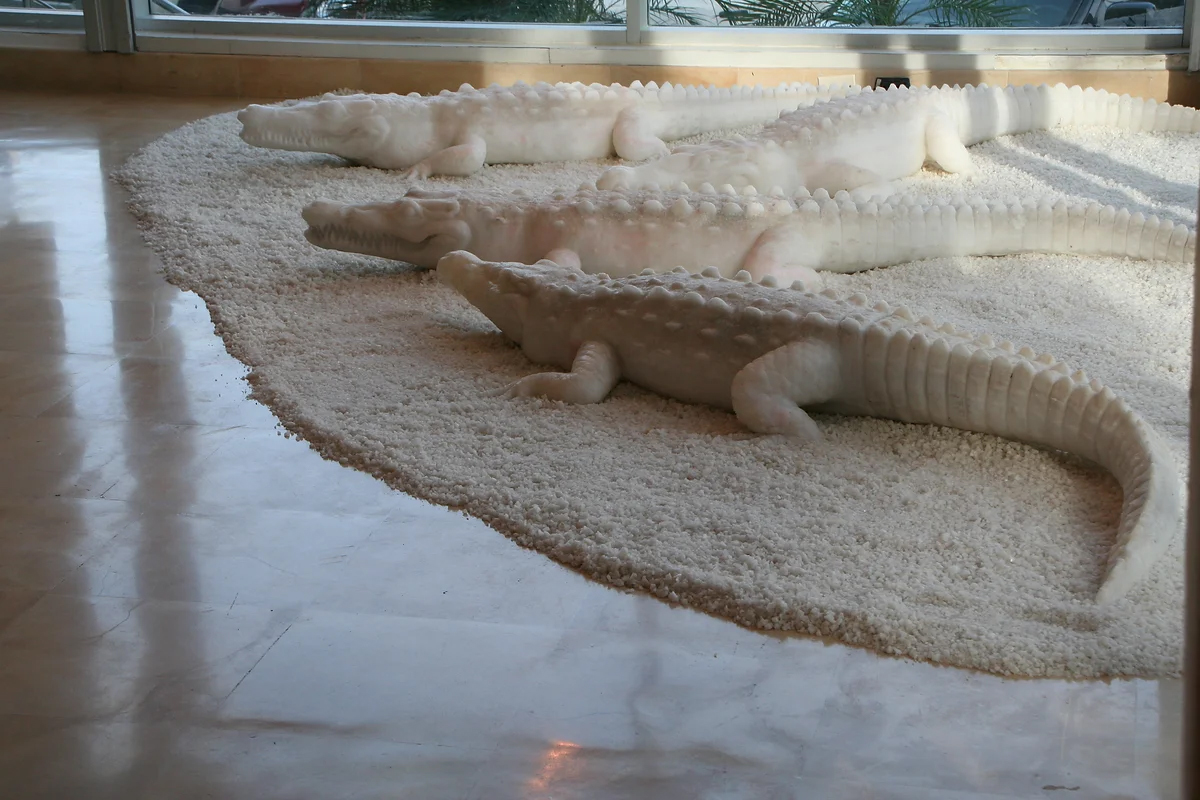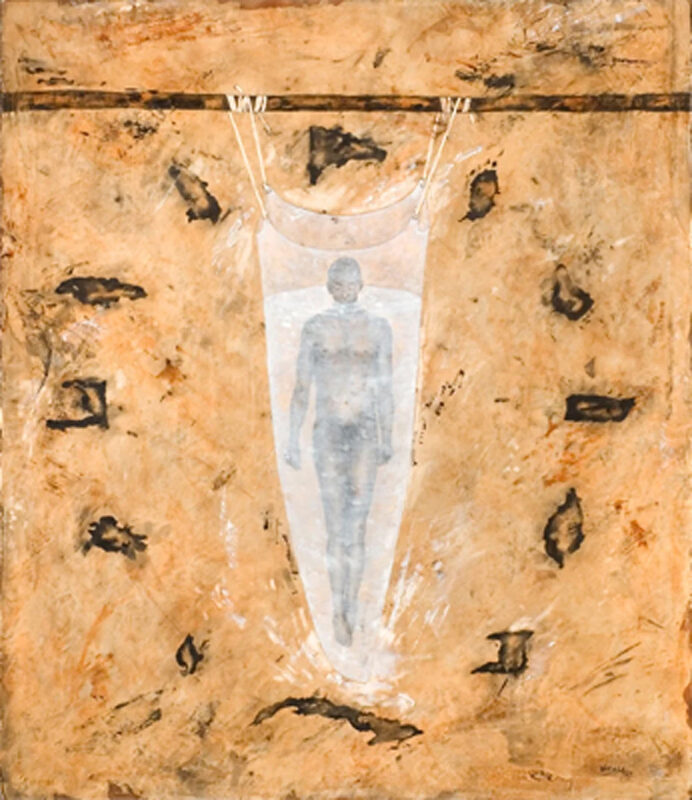"Once man is dead and domestic animals are destroyed, the species and genera that had been exterminated reappear, and the surface of the earth is invaded by enormous vegetation." -Blaise Cendrars, French poet.
The “Crocodilidae” family has 14 species, to which we can add a fifteenth: the Fernando Varela crocodiles.
This animal, of strange beauty or ugliness depending on your criteria, 240 million years old, swims in tropical waters on every continent except Europe—with the exception of zoos and other artificial habitats. It lives in fresh or salt water, and also rests and warms its shell on land… Its variable size can reach seven meters, and its longevity can reach 100 years.
Jaws and teeth give them a well-deserved reputation for exceptional strength and cruelty. Surprisingly, they are even bred today... to protect other beasts from the savagery of poachers. However, hunted and prized for their hides, they are considered vulnerable and endangered. Fernando Varela, whose work increasingly reflects his concern for nature and survival, has dazzled us with the appearance of four immaculate crocodiles molded in paraffin and salt, like guardians of paintings and drawings in the latest exhibition. In our country, they are not an exotic animal, but rather part of the fauna of Lake Enriquillo and its main attractions. However, their numbers are decreasing, their reproduction is changing, their appearance is becoming rarer...
The artist not only creates a fascinating installation and set of sculptural pieces, but also issues a "visual cry" of warning. A simultaneously hyperrealistic expression in form and surreal in color, the crocodile illuminates the space as a symbol, specifically through the absolute white of its body and its sea glass bed. It provides another dimension of art and reality, alongside images that also concern the preservation of life, flora, and habitat, before the only hope lies in resurrection.
In ancient civilizations and primordial cultures, the crocodile frequently inspired anonymous artists and appeared on monuments. In more recent times, it nourished caricatures and natural history plates. Now, Fernando Varela, a contemporary Caribbean and Latin American artist, pays an unusual and moving tribute of unusual beauty, dedicating a three-dimensional elegy to it, which, like its model, must be cared for and preserved.

